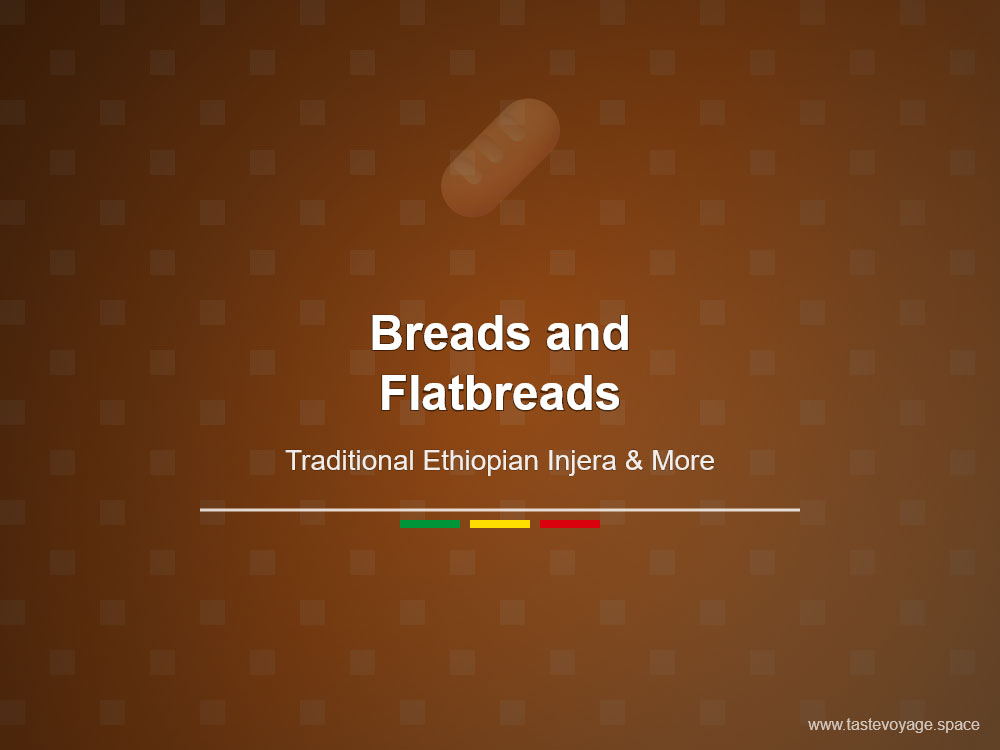Fix Common Injera Problems: Easy Ethiopian Baking Tips
Travel the World Through Food >> Breads and Flatbreads>>Ethiopian Cuisine>> Fix Common Injera Problems: Easy Ethiopian Baking Tips
Fix Common Injera Problems: Easy Ethiopian Baking Tips
How to Fix Common Ethiopian Injera Problems: Celebrating a Cultural Icon
Ethiopian injera is more than just food — it is a symbol of community, tradition, and culinary artistry. Known for its unique texture and tangy flavor, injera is a staple in Ethiopian cuisine and holds a special place in the hearts of those who cherish it. In this blog, we will explore the cultural significance of injera and address common issues that can arise during its preparation, helping you appreciate and master this extraordinary dish.
The Cultural Significance of Injera
Injera is a cornerstone of Ethiopian food culture. It serves as both a plate and a utensil, with dishes placed directly on its surface for shared eating. This communal style of dining emphasizes togetherness and hospitality, values deeply rooted in Ethiopian society. Injera’s distinctive spongy texture and slightly sour taste reflect the traditional fermentation process, connecting generations of cooks and families.
Beyond its culinary role, injera symbolizes unity. It bridges social and cultural differences, bringing people together during festivals, celebrations, and daily meals. Its preparation is often a communal effort, with families passing down recipes and techniques, preserving a rich heritage with each batch.
The Culinary Significance of Injera
Culinarily, injera is celebrated for its versatility and health benefits. Made primarily from teff, a tiny grain native to Ethiopia, injera is packed with nutrients including protein, fiber, and iron. This makes it a nutritious base for a variety of flavorful stews and vegetable dishes, known as wat and tibs.
The fermentation process of injera develops its characteristic tang, which balances the spices and flavors of accompanying dishes. Its porous surface allows for easy scooping and soaking up of flavors, creating a harmonious dining experience. Skilled preparation and an understanding of How to fix common problems can elevate injera from good to extraordinary, ensuring it remains a cherished part of Ethiopian culinary tradition.
Common Injera Problems and How to Address Them
Although injera boasts a rich cultural and culinary history, making it can sometimes present challenges. These issues are often rooted in fermentation, batter consistency, or cooking techniques. Recognizing and fixing these common problems helps ensure you create authentic, delicious injera every time.
Troubleshooting Texture and Fermentation
One of the most frequent issues is the batter not fermenting properly. This can result in injera that is too flat, dense, or lacking the signature sourness. To address this, consider adjusting fermentation time and temperature. A warmer environment speeds up fermentation, while a cooler space slows it down. Using fresh teff flour and maintaining clean utensils also supports healthy fermentation.
Another common problem involves the batter’s consistency. If it’s too thick, injera may turn out stiff and rubbery. Conversely, if it’s too thin, it may be fragile and difficult to handle. The key is to achieve a pourable, smooth batter that holds bubbles well, which contributes to that characteristic spongy texture.
Improving the Final Product
If injera comes out uneven or with holes that are too large or too small, it may be due to uneven heat or inconsistent batter distribution. Using a well-heated, flat griddle and pouring the batter in a circular motion can create an even surface. Covering the injera during cooking helps ensure even steaming, which is essential for developing the desired texture.
Injera’s flavor can also be affected by fermentation time. A longer fermenting period produces a tangier flavor, while a shorter one results in a milder taste. Adjusting fermentation based on personal preference is common, and experimenting can help find the perfect balance for Your palate.
Embracing the Art of Injera Making
Making injera is an art that involves patience, observation, and respect for tradition. While it may take some practice to perfect, embracing the process deepens your appreciation of Ethiopian culture and cuisine. Each batch reflects a connection to history and community, making the final product all the more meaningful.
Conclusion
Injera is more than a dish; it is a cultural emblem that embodies Ethiopian hospitality and culinary ingenuity. Understanding common problems and knowing how to fix them ensures that each piece of injera you create honors this rich heritage. Celebrate the beauty of injera, appreciate its significance, and enjoy the journey of mastering this extraordinary staple. Whether for a family meal or a cultural exploration, injera invites everyone to partake in a tradition that unites and inspires.
